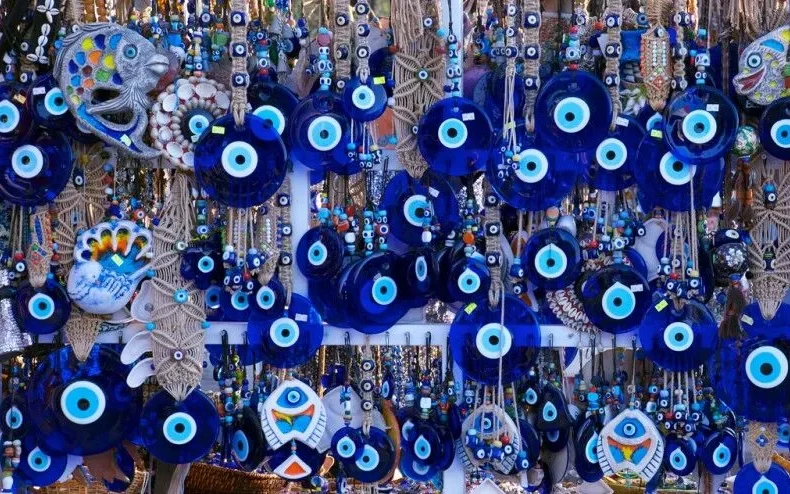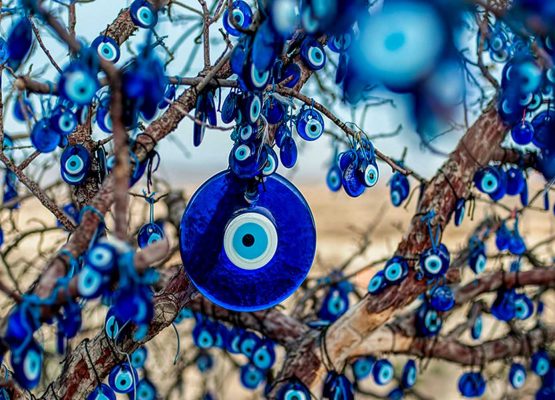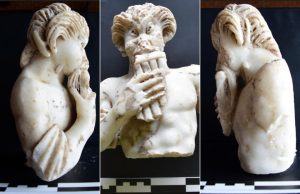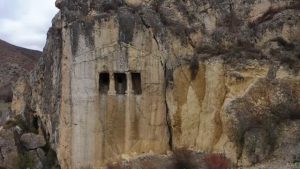
The Evil Eye Bead: A Thousand-Year Stare and the Power to Ward It Off
Some gazes feel heavy—like they pierce right through you. Your chest tightens, your energy shifts. This ancient fear, that a look could carry harm, has followed humanity for millennia. And to that invisible threat, people across time have offered the same silent defense: the evil eye bead, or Nazar Boncuğu.
Today, it’s a charm hanging from car mirrors, front doors, wrists, and baby cribs. But it’s far more than decoration. That little blue eye carries a story older than most of our written history.
A Shared Human Fear
From the deserts of Mesopotamia to the temples of ancient Greece, the belief in the “evil eye” was nearly universal. The idea? That envy or ill will—concentrated through a glance—could bring misfortune. And so, civilizations created amulets shaped like an eye, meant to “look back” at danger and reflect it away.

In ancient Türkiye, the belief was no different. Early Turkic tribes crafted blue-glass charms, calling them munçuk. These were tied to baby clothes, woven into horses’ manes, or hung over doorways. Blue wasn’t just pretty—it was sacred. Associated with the vast sky and the divine, blue was thought to repel darkness.
A Myth in Glass
Some legends say the Nazar bead holds the gaze of a god. Like Odin’s all-seeing eye, it observes and protects. Others believe the bead works by “absorbing” harmful energy. That’s why, in some cultures, a cracked bead is celebrated—not feared. It means the charm did its job.

And the material matters too. The traditional Nazar is made of hand-blown glass. Why? Because glass is fragile and, when it breaks, it shatters energy. In a poetic way, it’s protection through vulnerability.
From Ancient Symbol to Modern Icon
Despite our smartphones and science, the Nazar endures. Not because people are superstitious, but because symbols speak a language deeper than logic. When we wear or gift a Nazar, we’re not just warding off misfortune—we’re offering peace of mind, wrapped in tradition.
Whether you’re in Istanbul or Los Angeles, Athens or Mumbai, the sight of that blue eye feels oddly familiar. It’s a reminder that across time and continents, humans have shared the same quiet hope: “May nothing dark touch me.”
The evil eye bead isn’t just folklore. It’s a cultural artifact, a spiritual tool, and a deeply human response to unseen forces. It reflects our creativity, our fear of the unknown, and our unshakable belief in small symbols with great power.
You may also like
- A 1700-year-old statue of Pan unearthed during the excavations at Polyeuktos in İstanbul
- The granary was found in the ancient city of Sebaste, founded by the first Roman emperor Augustus
- Donalar Kale Kapı Rock Tomb or Donalar Rock Tomb
- Theater emerges as works continue in ancient city of Perinthos
- Urartian King Argishti’s bronze shield revealed the name of an unknown country
- The religious center of Lycia, the ancient city of Letoon
- Who were the Luwians?
- A new study brings a fresh perspective on the Anatolian origin of the Indo-European languages
- Perhaps the oldest thermal treatment center in the world, which has been in continuous use for 2000 years -Basilica Therma Roman Bath or King’s Daughter-
- The largest synagogue of the ancient world, located in the ancient city of Sardis, is being restored











Leave a Reply